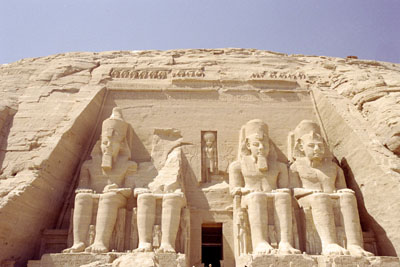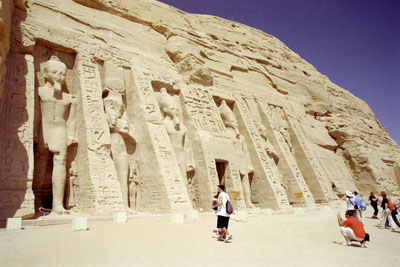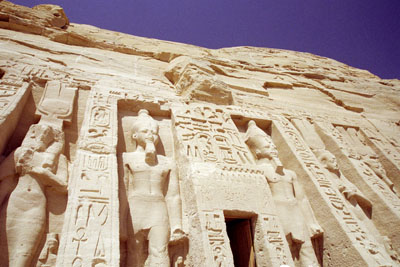In 1813 Swiss explorer, Jean Louis Burckhardt came across an improbable site on his travels in Southern Egypt- a giant head sticking out of the desert sand. This one head and the crowns of two others are all that was exposed of the giant Temple of Ramses II at Abu Simbel. Built for King Ramses II, the complex is actually two temples. One temple was built for Ramses with the four colossi of Ramses, seated and acting as sentinels over his temple. His mother, wife - Nefertari and some of his children are standing at his feet.
The Temple of Hathor next door depicts Ramses and his wife, Nefertari standing with some of their children at their feet. In a sign of undeniable devotion to his favorite wife, Nefertari's statues are depicted as the same size as those of Ramses. a very unusual gesture at the time. Ramses II ruled from 1279 to 1213 BC. Do the math, that is an incredible 66 years! Few rulers, even into modern history, have matched that staying power. He was (and is) widely regarded as Egypt's greatest and most powerful ruler. His successors called him "the Great Ancestor".
The temple complex was built into the banks of the Nile between 1274 and 1244 BC. Over the years, as Egypt's power waned, the remote temples were buried by the shifting sands until that day in 1813 when Burckhardt discovered a head sticking out of the desert floor. By 1817, the sand had been cleared away enough to enter the temple. With completion of the Aswan High Damn in 1970, the whole complex was threatened with a watery demise. Fortunately, UNESCO stepped in and moved the temple (and several other threatened temples) piece by piece to higher ground. The complex is part of UNESCO's world heritage site, the Nubian Monuments. It is one of my personal favorites, and a site that I never really believed I would ever see. Alas - no photography of the interior.
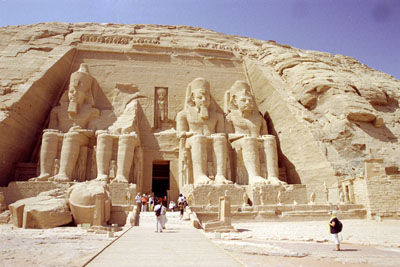 |
|
|
|
|
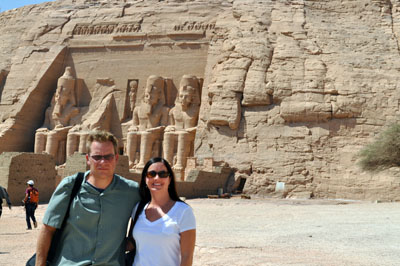 |
The two temples at Abu Simbel. The Great Temple of Ramses II (Top) and the much smaller Temple of Hathor (Above). |
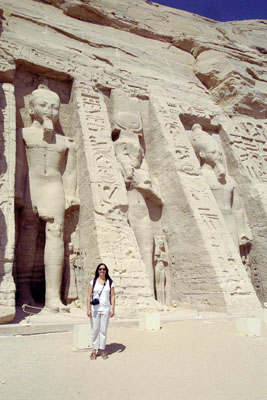 |
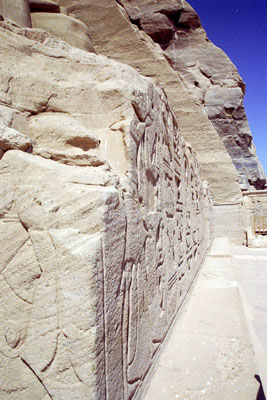 |
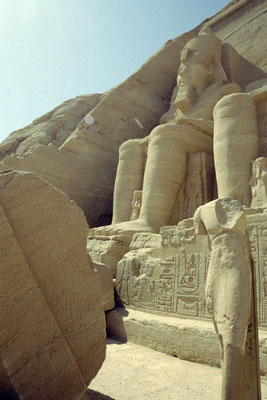 |
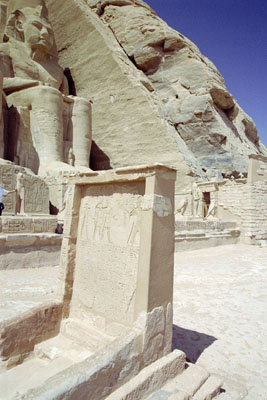 |
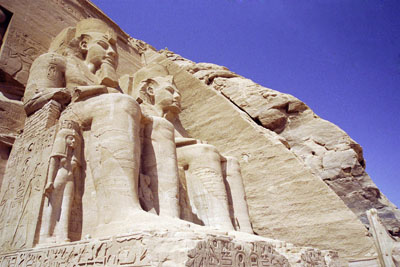 |
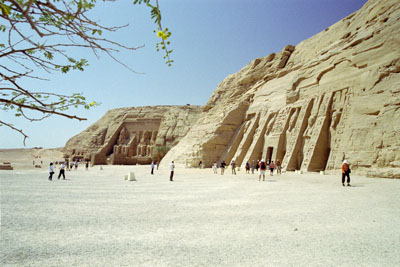 |
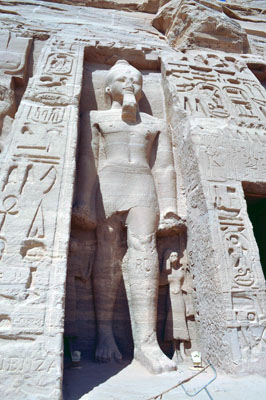 |
All photos on this page are originals by & copyrighted by Daren Willden, unless otherwise stated. All rights reserved.
